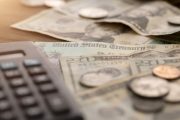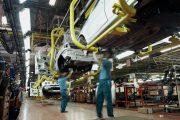
Despite the enormous headwinds placed on the U.S. economy by the present administration, the latest jobs report from ADP (often an accurate precursor to the government’s jobs report to be released on Friday) reveals, the economy has almost completely recovered from the pandemic-inspired recession.
The private group, using information from its enormous database of 460,000 employers covering nearly 26 million workers, said on Wednesday that the U.S. economy added 456,100 jobs in March (including franchise jobs).
Said Nela Richardson, ADP’s chief economist:
Job growth was broad-based across [all] sectors in March, contributing to the nearly 1.5 million jobs added for the first quarter in 2022.
Businesses are hiring, specifically among the service providers which had the most ground to make up due to early pandemic losses.
Specifically, small businesses (employing fewer than 50 people) added 90,000 jobs last month, while medium-sized businesses (fewer than 500 workers) added 188,000 jobs. Large businesses (more than 500 workers) added 177,000 jobs.
By industry the news was equally good. Goods producers — natural resources/mining, construction, and manufacturing — added 79,000 jobs. The services sector — professional and businesses services, education, leisure and hospitality, and other services — added 377,000 new jobs in March.
ADP’s numbers confirm what the St. Louis Federal Reserve reports. In February 2020, just before the pandemic restrictions kicked in, more than 164,500,000 people were working. Two months later, at the nadir, just 156,358,000 were working. Put another way, Covid cost the U.S. economy more than 8,142,000 jobs.
Eighteen months later (December 2021), 162,300,000 people were working. Since then, the U.S. economy has added another 1,700,000 jobs. And government economists are expecting the report from the Bureau of Labor Statistics (BLS) to confirm today’s report from ADP.
At that rate — 500,000 new jobs a month — the U.S. economy will have fully recovered from the Covid-inspired and government-mandated shutdown by June, perhaps even sooner.
Other indicators are showing just how robust — and resilient — the U.S. economy really is. Corporate profits rose in 2021 by an astonishing 25%, the largest gain since 1976. The economy itself grew by 5.7% in 2021, while GDP growth (gross domestic product) in the fourth quarter of 2021 rose 6.9% on an annual basis.
Fewer than a third of economic forecasters are predicting a recession in 2022, and the consensus among them — called the “Blue Chip consensus” — forecasts the economy to continue to grow modestly into the rest of the year, with some suggesting another three-percent growth in the economy by the end of the year.
Considering the various headwinds placed on the economy by the present administration, these numbers are remarkable. Most are familiar with the present administration’s attack on fossil fuels and its out-of-control spending showing up as price increases at the gas pump and the grocery store. And those concerns are showing up in the polls.
But beneath the surface the recovery is taking place, especially in the once-quiet oil fields. And opportunities are beginning to show up for the country’s greatest investor: Warren Buffett. The founder of Berkshire Hathaway (the eighth-largest public company in the world), Buffett has been biding his time, waiting for promising opportunities to arise out of the Covid-inspired wreckage.
On Monday his company announced its purchase (Buffett doesn’t buy stocks; he buys companies) of Alleghany Corporation, a Nebraska-based insurance conglomerate, for $11.6 billion. What’s telling is this: Buffett paid a premium of 16% above what Wall Street thought the company was worth, indicating his enthusiasm for his latest acquisition to add nicely to his company’s (and his investors’) already significant bottom line in the future.
Friday’s report from the BLS should confirm not only ADP’s results announced today, but also Buffett’s confidence in the future growth of the overall economy in the months and years to come.
Related article: U.S. Oil Industry Starting to Revive



